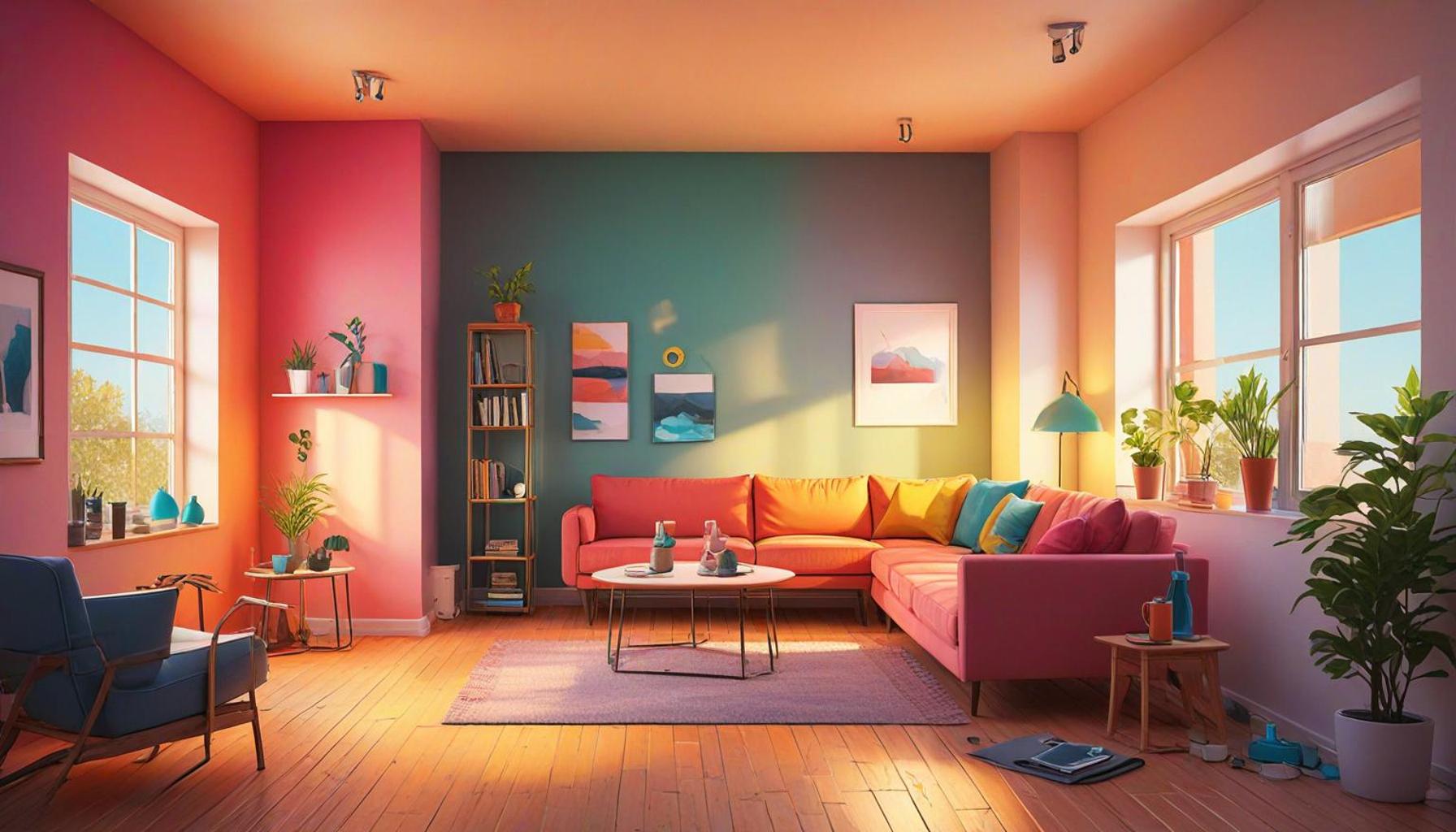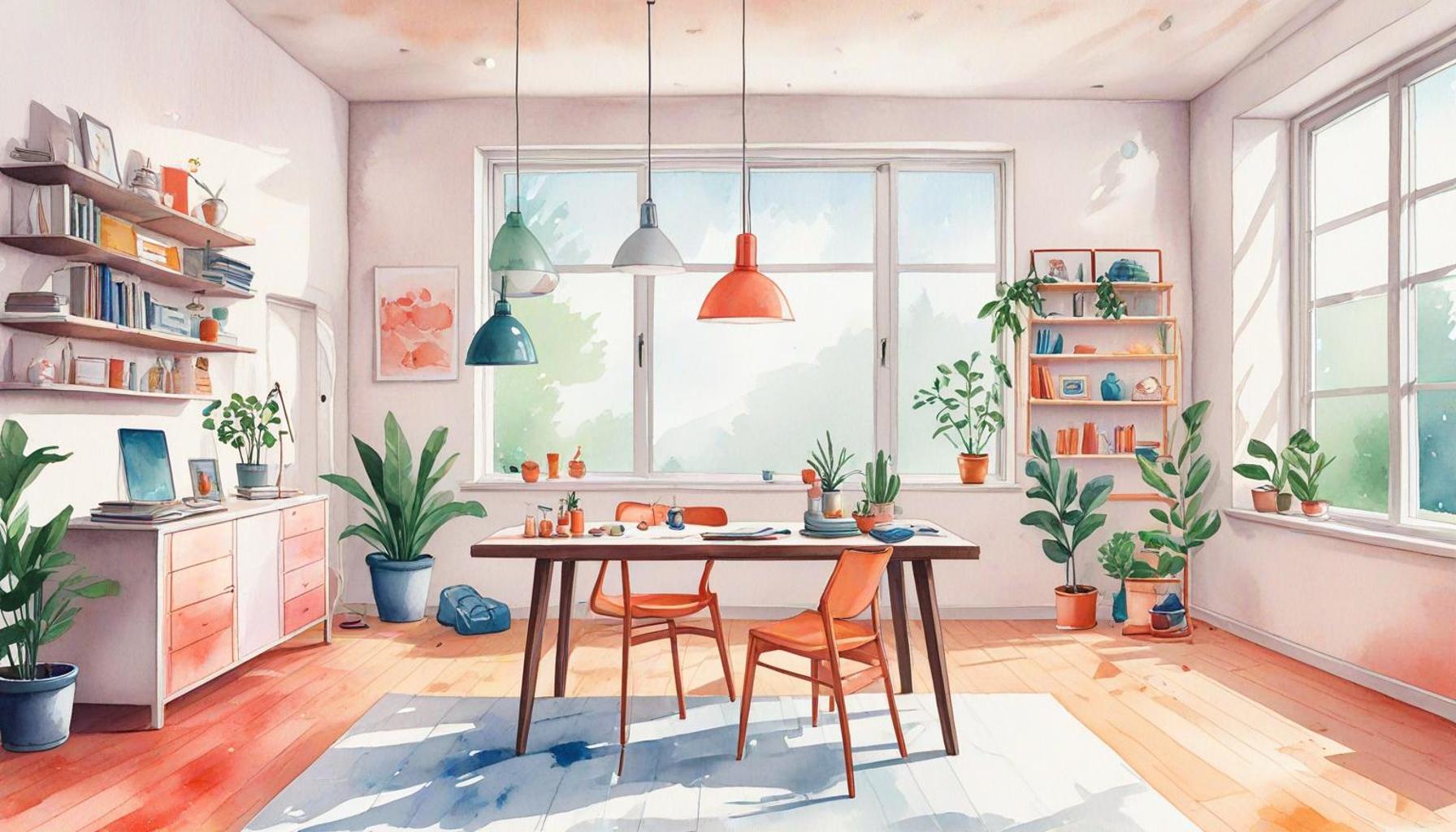The impact of minimalism on energy efficiency in residential environments

Understanding Minimalism in Residential Living
As the globe moves toward a more sustainable future, the principles of minimalism are finding their place in the heart of residential design. Emphasizing simplicity and the elimination of excess, minimalism is not just a design choice; it is a lifestyle that inherently contributes to energy conservation. By reevaluating our living spaces, we can adapt our homes to support both our well-being and environmental health.
Key Benefits of Embracing Minimalism
The impact of minimalism extends beyond aesthetics, leading to profound changes in how we interact with our living environments. Here are some of the prominent advantages:
- Reduced Consumption: By owning fewer items, homeowners significantly decrease their energy consumption. This reduction translates into lower energy bills, as heating, cooling, and powering household appliances becomes more efficient. For instance, a family that downsizes from a large collection of electronics may find their electricity usage decrease substantially, resulting in both cost savings and reduced environmental impact.
- Smart Space Utilization: Minimalist designs favor open layouts that promote airflow throughout the home. This thoughtful arrangement can limit the reliance on air conditioning and heating systems, particularly in regions with mild climates. For example, incorporating large windows to harness natural light can maintain comfortable temperatures, further reducing energy expenditures.
- Energy-Efficient Design: Many minimalist homes blend functionality with sustainability, often utilizing eco-friendly materials like bamboo, reclaimed wood, or recycled metals. This not only enhances the home’s energy efficiency but also ensures longevity and reduced maintenance needs, contributing to an overall lower carbon footprint.
Psychological and Environmental Benefits
The intersection of minimalism and environmental responsibility does not just yield practical benefits; it also enhances psychological well-being. Studies suggest that living in clutter-free environments can reduce stress and anxiety, leading to improved mental health. A serene, organized space allows individuals to focus better and create a sense of calm, transforming their daily experiences.
Homeowners across the United States can benefit from making informed decisions about building materials, appliance selections, and space planning. For instance, opting for ENERGY STAR certified appliances not only supports energy efficiency but also directly impacts household carbon output. By combining these choices with a minimalist approach, homeowners can achieve substantial long-term savings alongside an environmentally conscious lifestyle.
Conclusion: A Path to Sustainable Living
As we explore the relationship between minimalism and energy efficiency, it becomes clear that this approach offers a promising pathway towards a more sustainable future. By embracing the principles of minimalism, individuals can redefine their homes to reflect not only personal taste but also a commitment to ecological stewardship. As homeowners consider the potential to transform their living spaces, they also hold the power to affect positive change in their communities and the broader world.
DISCOVER MORE: Click here to simplify your life
Transforming Spaces: Minimalism’s Role in Energy Efficiency
The essence of minimalism transcends mere decoration—it challenges the conventional notions of what comprises a home. With an increasing awareness surrounding energy efficiency, homeowners are discovering that minimalist principles extend into environmental stewardship, creating spaces that are both functional and sustainable. The shift toward less not only minimizes the clutter in our lives but also paves the way for smarter energy management in residential settings.
Consolidated Energy Use Through Minimal Living
One of the most immediate impacts of minimalism on energy efficiency is the consolidation of energy use. By reducing the number of items within a home, residents often find themselves with fewer energy-consuming devices. This translates into lower electricity bills and a smaller carbon footprint. A study conducted by the U.S. Department of Energy highlights that households that embrace minimalistic lifestyles can see a decrease in energy consumption by up to 30%, particularly in homes filled with fewer electronic devices and more efficient lighting solutions.
Moreover, the size of a residence significantly influences its energy performance. Many minimalist homes opt for smaller, more efficient spaces that use less material for construction and require less energy to heat and cool. With the average home in the United States exceeding 2,500 square feet, minimalist designs that focus on compactness can drastically reduce heating and cooling needs. This compact living encourages not only the optimization of resources but also fosters a closer relationship with our immediate environment.
Integrating Energy-Efficient Technologies
When constructing a minimalist home, many homeowners are incorporating advanced energy-efficient technologies. Options such as solar panels, smart home systems, and high-efficiency HVAC units are not just reflections of modernity; they align perfectly with the minimalist ethos of sustainability. For instance, solar panels can significantly reduce dependency on nonrenewable energy sources, providing clean energy that decreases overall household emissions.
Here are some energy-efficient technologies that synergize with minimalist design:
- Smart Thermostats: These devices learn your schedule and adjust heating and cooling accordingly, optimizing energy usage without sacrificing comfort.
- LED Lighting: Switching to LED lighting can cut energy costs significantly. LEDs use up to 80% less energy than traditional incandescent bulbs and have a much longer lifespan.
- Energy-Efficient Appliances: Investing in ENERGY STAR-certified appliances not only conserves water and energy but also reduces the overall operating costs of running a household.
Through these innovative technologies, minimalist homes serve as a model for how energy efficiency can be effectively integrated into modern living. Homeowners are encouraged to thoughtfully consider their selection of items—focusing on quality over quantity, which aligns with both their personal values and environmental impact.
Conclusion: The Threshold of Change
As we delve deeper into the question of how minimalism influences energy efficiency, it becomes increasingly clear that a minimalist lifestyle can offer transformative benefits for both individuals and the environment. By striving for simplicity, we can create spaces that not only reflect our identity and aspirations but also contribute positively to the planet’s future. This intersection of design and efficiency makes minimalism a compelling choice for the mindful homeowner.
| Advantage | Description |
|---|---|
| Reduced Energy Consumption | Minimalism promotes fewer electronic devices and appliances, leading to significantly lower energy bills. |
| Enhanced Natural Lighting | Minimalist designs often feature larger windows and open spaces, allowing maximum natural light and reducing reliance on artificial lighting. |
The concept of minimalism in residential environments goes beyond aesthetics and taps into the essential need for energy efficiency. By adopting a minimalist lifestyle, homeowners can significantly impact their energy consumption behaviors. The principle of having less allows families to prioritize quality over quantity, which translates into fewer energy-consuming devices.Furthermore, an emphasis on open floor plans and strategically placed windows not only enhances the home’s aesthetic appeal but also its thermal efficiency. Natural lighting plays a critical role in energy savings, as it minimizes the dependency on electric lights during the day. This harmonious balance of architecture and nature fosters a sustainable living environment.Exploring the impacts of minimalism reveals how these practices can innovate energy efficiency standards in modern housing. Homeowners keen on sustainability might find the shift towards minimalism not just a design choice, but a transformative lifestyle change toward an energy-efficient future.
DISCOVER MORE: Click here for valuable tips on organizing your spaces with clarity</p
Minimalism and the Lifecycle Approach to Resources
The minimalist lifestyle not only favors reduced consumption but also embraces a lifecycle approach to resources, emphasizing longevity over disposability. This shift fundamentally changes how homeowners view their possessions and promotes energy efficiency in residential environments. By choosing high-quality items that are built to last, minimalists contribute to less frequent replacements, ultimately leading to lower energy and material consumption over time.
Durable Materials and Sustainable Choices
In minimalist design, the emphasis on high-quality, sustainable materials directly influences energy efficiency. Homeowners are increasingly opting for products made from recycled, reclaimed, or sustainably sourced materials. For example, using bamboo flooring or reclaimed wood not only adds aesthetic value but also reduces the energy-intensive processes associated with new constructions. The National Association of Home Builders estimates that homes built with sustainable materials consume 30% less energy than those using conventional construction methods.
Additionally, minimalist living encourages the use of versatile items that can serve multiple purposes, promoting function over form. For instance, a sleek sofa bed can act as both a seating area and a guest bed, reducing the need for additional furniture. This not only minimizes energy use affiliated with production but also reduces the physical space required, leading to less energy expenditure for heating and cooling.
Behavioral Shifts and Energy Conservation
Beyond the tangible aspects of energy efficiency, minimalism cultivates a mindset centered around mindfulness and intentionality. Individuals who adopt a minimalist lifestyle often become more conscious of their energy consumption practices. Simple behavioral shifts, such as turning off lights in unused rooms or using natural light whenever possible, stem from a desire to preserve both resources and space. This awareness can lead to significant savings on energy bills over time.
In fact, the Energy Information Administration indicates that households actively engaged in energy conservation practices can save pivotal amounts, averaging around $200 annually. This significant savings encourages further discussions about energy-efficient habits and practices, creating a ripple effect that extends into local communities.
Community Involvement and Shared Resources
Minimalism often promotes community-oriented living, where shared resources and collaborative consumption become core principles. Co-housing models, which have gained popularity in the U.S., allow residents to share amenities such as gardens, tools, and communal spaces. By pooling resources, homeowners not only reduce their individual energy consumption but also create a more tight-knit community that places value on sustainability.
Shared resources can lead to enhanced energy efficiency since collective maintenance and use lower the total energy expenses typically incurred by individual households. For instance, sharing a community garden minimizes the need for multiple home gardens, conserving water and reducing the environmental impact associated with garden maintenance.
Urban Minimalism and Sustainable City Living
The rise of urban minimalism offers an interesting perspective on energy efficiency in densely populated areas. As more people relocate to cities, there is a growing trend of living in smaller, multifamily dwellings that challenge traditional housing norms. These smaller units often come with shared utilities, which naturally lead to a reduction in overall energy use. Urban minimalists typically favor public transportation or biking over car ownership, contributing to lower emissions and less energy-intensive commuting methods.
The consequences of this urban paradigm shift are profound, as metropolitan areas with minimalist approaches report substantial drops in per capita energy consumption—often by more than 25%. This lifestyle not only benefits the environment but also promotes healthier living conditions through reduced pollution levels.
DON’T MISS: Click here to discover essential decluttering tips
Conclusion: Embracing Minimalism for a Sustainable Future
The profound impact of minimalism on energy efficiency in residential environments underscores a transformative movement that goes beyond mere aesthetic appeal. By prioritizing quality over quantity, minimalist homeowners advocate for a lifestyle that conserves resources, reduces waste, and ultimately fosters environmental sustainability. The marriage of durable materials, multifunctional spaces, and intentional living not only enhances energy efficiency but also encourages a culture of mindfulness regarding energy consumption.
As demonstrated, the transition toward minimalist principles can lead to significant savings—an average of $200 annually—while promoting community engagement through shared resources. The shift to urban minimalism further illustrates how densely populated areas can thrive on reduced per capita energy consumption, with many cities reporting a drop exceeding 25%. Such communal strategies highlight the potential of collective efforts in energy conservation, paving the way for a more sustainable living model.
However, the journey toward minimalism is not solely an individual endeavor; it provokes broader societal change. As more people embrace minimalist living, it initiates discussions surrounding energy-efficient practices and sustainable design. Ultimately, adopting minimalism offers a pathway not just for individual households but for entire communities to collectively reimagine their relationship with resources, making it a compelling choice for a greener future.
As we continue to confront the urgent challenges of climate change and resource depletion, minimalism may very well serve as a blueprint for reconceptualizing our homes and lifestyles. By fully understanding and embracing this lifestyle, we can unlock vast potential in improving energy efficiency while nurturing a sustainable environment for generations to come.


